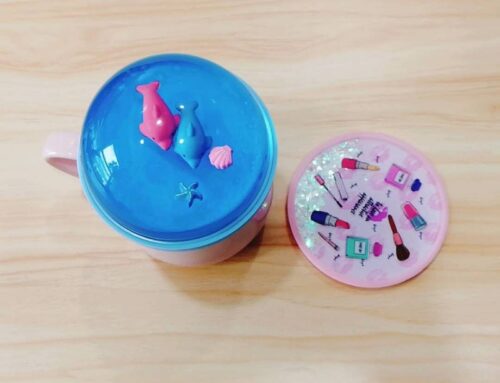Temporizadores líquidos, a menudo llamadas relojes de arena líquida, son dispositivos fascinantes que cautivan a los usuarios con su colorido, pantallas líquidas que fluyen. Estos temporizadores se utilizan como artículos decorativos., relevistas del estrés, e incluso herramientas de enseñanza. Pero, ¿cómo funcionan exactamente?? Si tienes curiosidad por su mecanismo, considerando un proyecto de bricolaje, o investigando proveedores confiables, Comprender los temporizadores líquidos puede ayudarlo a apreciar su encanto y funcionalidad.
¿Qué es un temporizador líquido??
Un temporizador líquido es un dispositivo compuesto por dos cámaras conectadas llenas de líquidos inmiscibles, típicamente aceite y agua. Cuando se voltea, El líquido de la cámara superior fluye a la cámara inferior, Creación de movimientos fascinantes como gotas o burbujas. Este movimiento visualmente calmante es la razón temporizadores líquidos son populares como artículos decorativos y terapéuticos.
¿Cómo funciona un temporizador líquido??
Los temporizadores líquidos operan utilizando principios científicos básicos, incluida la gravedad, dinámica fluida, y las propiedades de los líquidos inmiscibles.
- Líquidos inmiscibles
Los temporizadores líquidos usan dos líquidos que no se mezclan, como agua y aceite. Estos líquidos a menudo se tiñen en colores vibrantes para el atractivo visual.. La diferencia de densidad asegura que un líquido flote encima del otro, Creando un efecto en capas. - Gravedad y flujo
Cuando se voltea el temporizador, La gravedad tira del líquido de la cámara superior hacia la parte inferior uno a través de un pasaje estrecho. La velocidad del flujo está controlada por la viscosidad de los líquidos y el tamaño del pasaje, Creando un lento, movimiento hipnótico. - Burbujas y patrones
Muchos temporizadores líquidos están diseñados para atrapar burbujas de aire, Agregar más variedad a la pantalla. Estas burbujas crean un movimiento adicional, como rebotar, terrible, o deslizarse a través del líquido, Mejora de la experiencia visual. - Diseño de precisión
El atractivo de un temporizador líquido se encuentra en su precisión. Las relojes de arena líquida de alta calidad están cuidadosamente diseñadas para equilibrar la velocidad de flujo, estética, y durabilidad, Garantizar un rendimiento constante.
Cómo hacer un gourglass líquido bricolaje
Crear su propio reloj de arena líquida puede ser un proyecto divertido y creativo.
Materiales necesarios:
- Dos botellas o contenedores de plástico transparente
- Agua y aceite (P.EJ., aceite para bebés)
- Colorante de alimentos
- Pegamento o cinta
- Una pajita o un conector pequeño
Pasos a seguir:
- Llene una botella a mitad de camino con agua y agregue unas gotas de colorante de alimentos. Luego agregue aceite hasta que la botella esté casi llena, Dejando un pequeño espacio de aire.
- Conecte la segunda botella con una pajita o un tubo pequeño como el pasaje. Selle la conexión firmemente con pegamento o cinta para evitar fugas.
- Voltee las botellas conectadas para probar el flujo. Ajuste el tamaño del pasaje o la relación agua a aceite para lograr el efecto deseado.
- Una vez satisfecho, Selle permanentemente las botellas y decórtelas como desee.
Mientras que las relojes de arena líquida de bricolaje son divertidos de hacer, Las versiones profesionales son más refinadas, ofreciendo tasas de flujo precisas y diseños duraderos.
Precio de reloj de arena líquida
El costo de un reloj de arena líquido varía según el tamaño, diseño, y calidad.
- Modelos básicos: Pequeño, Los diseños simples suelen tener un precio entre $5 y $10, haciéndolos asequibles para uso personal o regalos.
- Opciones de rango medio: Los diseños más grandes o más intrincados generalmente van desde $15 a $30. Estos son excelentes para fines decorativos.
- Garas de arena premium: Los temporizadores líquidos de gama alta con características únicas o diseños personalizados pueden costar $50 o más, a menudo utilizado como regalos de lujo o artículos de marca.
Los pedidos a granel de un proveedor de reloj de arena líquida pueden ofrecer descuentos, especialmente para empresas o diseños personalizados.
Elegir un proveedor de reloj de arena líquida
Seleccionar un proveedor de reloj de arena líquido confiable asegura que reciba de alta calidad, productos duraderos.
- Seguro de calidad: Busque proveedores que usen materiales premium para garantizar la longevidad del temporizador y los efectos visuales vibrantes.
- Opciones de personalización: Algunos proveedores le permiten personalizar diseños, incluyendo colores, formas, e incluso logotipos de marca.
- Fijación de precios competitivos: Compare los precios entre los proveedores para encontrar opciones que se ajusten a su presupuesto sin comprometer la calidad.
- Entrega oportuna: Elija proveedores conocidos por su envío confiable y servicio al cliente para evitar demoras o productos dañados.
Conclusión:
Los temporizadores líquidos son más que solo objetos decorativos: son una mezcla de ciencia y arte, ofreciendo relajación y un toque de magia a cualquier espacio. Si te encuentras curioso sobre cómo funcionan, Desea crear su propio proyecto de bricolaje de reloj de arena líquida, o buscar precios competitivos de reloj de arena líquida, Verá por qué estos dispositivos atemporales continúan cautivando y sirviendo a fines versátiles. Para aquellos que buscan opciones de alta calidad, Trabajar con un proveedor de reloj de arena líquido de buena reputación puede asegurarse de ser impresionante, productos duraderos adaptados a sus necesidades. Los temporizadores líquidos aportan un encanto único y relajante a cualquier espacio, ya sea que se use personalmente o se ordene a granel.













Deja un comentario